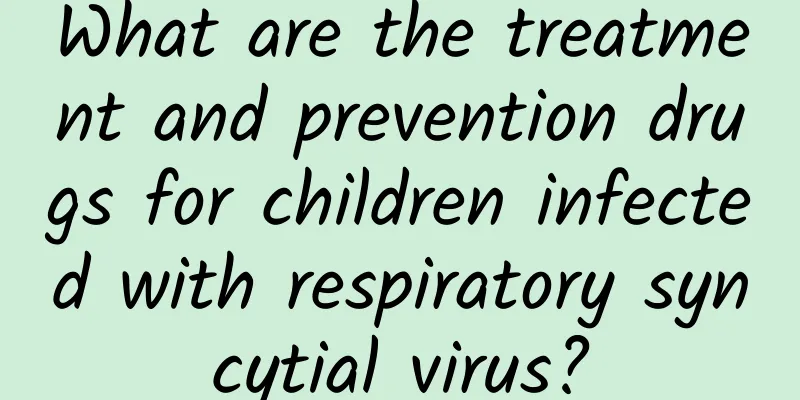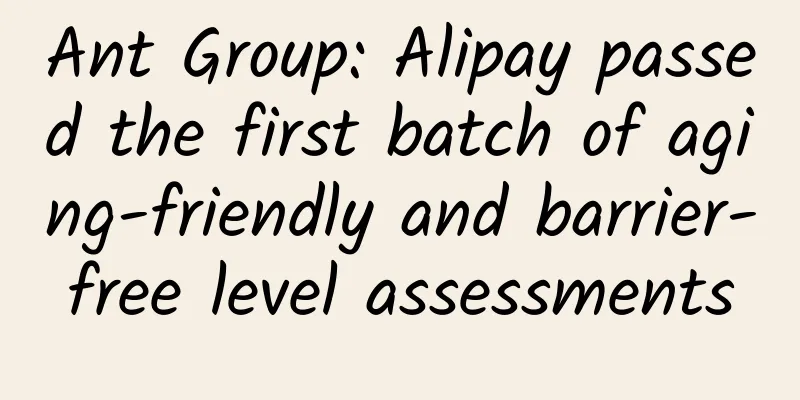What are the treatment and prevention drugs for children infected with respiratory syncytial virus?

|
In autumn and winter, respiratory viruses are prevalent across the country, with influenza, respiratory syncytial virus, adenovirus, and rhinovirus taking turns to "appear on the scene", causing long queues in the pediatrics, emergency, and infusion halls of many hospitals. According to Wang Quanyi, chief epidemiologist and deputy director of Beijing Center for Disease Control and Prevention, the current prevalence of Mycoplasma pneumoniae in Beijing has dropped to fourth place among children's respiratory infectious diseases, with the top three being influenza, adenovirus and respiratory syncytial virus. Respiratory syncytial virus (RSV) is also a common virus that causes respiratory tract infections. People of all ages can be infected with this virus, but children are more susceptible and may even be hospitalized due to infection. Why does RSV "target" children? How are the clinical manifestations of children different from those of influenza? What are the current clinical treatment options? Can drugs and vaccines be used for prevention? 1. Why does respiratory syncytial virus target children? Respiratory syncytial virus (hereinafter referred to as RSV) is one of the most important pathogens causing acute lower respiratory tract infections in children under 5 years old. In addition, it is also an important pathogen of acute lower respiratory tract infections in the elderly and immunocompromised people. Because infants and young children are still developing, their airway lumen surface area to volume ratio (SA/V) is high, and the lumens of the bronchioles in the airway are smaller than those of adults, making them more susceptible to obstruction and RSV infection. In addition, the initial symptoms of infection in infants and young children are similar to those of the common cold, making it easy for them to "get away with it." According to statistics, more than 95% of infants and young children are infected with RSV by the age of 2. The pathogenic mechanism of RSV infection is relatively complex, involving the combined effects of pathogens, airway epithelial cell-related factors, immune system response, nervous system response, host and environmental factors. 2. What are the clinical manifestations of the children? How is it different from influenza? The clinical manifestations of RSV infection in children vary greatly: it may be a mild upper respiratory tract infection or otitis media, with symptoms such as nasal congestion, runny nose, and cough, usually characterized by cough, shortness of breath, foaming at the mouth, and wheezing; it may also be a severe lower respiratory tract infection, such as pneumonia, bronchiolitis, etc. Clinical symptoms are related to the child's age, underlying disease, environmental exposure factors, and history of respiratory infection. Influenza (hereinafter referred to as flu) is mainly characterized by fever, headache, myalgia and general discomfort. The body temperature can reach 39-40℃, and there may be chills and shivering. It is often accompanied by systemic symptoms such as muscle and joint pain, fatigue, sore throat and dry cough. Some patients have mild symptoms or no flu symptoms. Children infected with influenza B often present with vomiting, abdominal pain, and diarrhea. Influenza without complications is usually self-limiting. 3. What are the current treatment options? Up to now, there are no specific antiviral drugs and treatments for respiratory syncytial virus infection in China. Generally, conventional antiviral drugs and symptomatic treatments such as cough and expectorant drugs are used, including interferon, ribavirin, bronchodilators, glucocorticoids, hypertonic saline nebulization inhalation, leukotriene receptor antagonists, antibiotics, etc. Treatment options include: • Antiviral drugs include interferon and ribavirin. The routine use of ribavirin is not recommended (because its safety and effectiveness are still controversial, and in my country it is currently only used for children with high-risk RSV infection who have impaired/deficient immune function). For lower respiratory tract infections caused by RSV infection, recombinant human α interferon can be tried for antiviral treatment in addition to routine basic treatments such as anti-infection, anti-asthma, oxygen inhalation and fluid replacement. • Routine use of systemic glucocorticoids, hypertonic saline nebulization inhalation, and leukotriene receptor antagonists are not recommended (for children with severe wheezing and dyspnea caused by RSV infection, when other treatments are ineffective and the hospital stay exceeds 3 days, 3% hypertonic saline nebulization can be considered for treatment); • For children with RSV infection and wheezing symptoms, bronchodilators can be tried and the clinical effect can be observed; • Antimicrobial drugs are not recommended for routine use, nor are they recommended for preventive use; anti-infection treatment can be performed when secondary bacterial infection is considered or when there are high-risk factors for bacterial infection in severe cases. 4. How to carry out specific prevention? Currently, there is no RSV-specific antiviral drug on the market, and patients mainly receive supportive treatment through interferon, bronchodilators, glucocorticoid therapy, etc. However, RSV preventive drugs and vaccines have been approved for marketing abroad. 1. Drug prevention Palivizumab: In 1998, it was approved by the U.S. Food and Drug Administration (FDA) for the prevention of RSV infection in high-risk children under 2 years old. Usage: Premature infants (gestational age <32 weeks) with significant hemodynamically abnormal heart disease and chronic lung disease can be given palivizumab for prevention within 1 year at the beginning of the RSV infection high incidence season, 15 mg/(kg·time), once/month, intramuscular injection, for up to 5 consecutive months. Nicevir monoclonal antibody: In October 2022, it was first approved in the European Union; in July 2023, it was approved by the FDA for the prevention of RSV infection in children under 2 years old. Usage: Newborns born in the first RSV virus season or entering the first RSV virus season after birth, and children under 24 months old who are still susceptible to severe respiratory syncytial pneumonia in the second RSV season, a single intramuscular injection, the efficacy can last for five months. In addition, some drugs, such as monoclonal antibodies, fusion inhibitors, immunoglobulins, etc. have entered the Phase III clinical research stage, bringing hope for the prevention and treatment of RSV. 2. Vaccine prevention Respiratory syncytial virus vaccine Arexvy: In May 2023, it was approved by the FDA for the prevention of lower respiratory tract disease (LRTD) caused by respiratory syncytial virus infection in people aged 60 and above. This is the world's first RSV vaccine approved for the elderly. Bivalent RSV vaccine Abrysvo: In May 2023, it was approved by the FDA for the prevention of acute respiratory and lower respiratory tract diseases caused by RSV in adults 60 years and older. In August 2023, the FDA approved the vaccine to prevent RSV-related lower respiratory tract diseases and severe lower respiratory tract diseases in infants from birth to 6 months old through active vaccination of pregnant women at 32-36 weeks of pregnancy. This is the first FDA-approved vaccine for pregnant women. As of now, there are no RSV-related preventive vaccines available on the market for people of other age groups. However, in June 2023, according to the official website of the Drug Review Center of the National Medical Products Administration (CDE), the recombinant respiratory syncytial virus (RSV) vaccine Arexvy (AS01E adjuvant system) obtained implicit approval for clinical trials and is suitable for active immunization to prevent lower respiratory tract diseases in adults aged 60 and above caused by respiratory syncytial virus RSV-A and RSV-B subtypes. 5. How to prevent RSV infection in daily life? The transmission routes of RSV include air droplets and close contact. It can survive on hands or contaminants for several hours. People of all ages can be infected. Susceptible people can become infected after their nasopharyngeal mucosa or conjunctiva come into contact with the virus. Attention should be paid to hand hygiene, isolation and care should be strengthened for children suspected of infection, contact with RSV-positive children should be avoided, children should be avoided from going to crowded places, and masks should be worn in a standardized manner; personal protection should be taken when visiting medical institutions to prevent cross-infection. References: [1] Xie Zhengde, Xu Baoping, et al. Expert consensus on diagnosis, treatment and prevention of respiratory syncytial virus infection in children[J]. Chinese Journal of Practical Pediatrics, 2020(35)4:241-250. [2] Cameron Griffiths, Steven J Drews, David J Marchant. Respiratory Syncytial Virus: Infection, Detection, and New Options for Prevention and Treatment . Clin Microbiol Rev. 2017 Jan;30(1):277-319. doi: 10.1128/CMR.00010-16. [3] Sun Yao, Ji Xing. Therapeutic drugs and rational use of respiratory syncytial virus infection in children[J]. Chinese Journal of Rational Drug Use, 2023, 20(8):17-18. [4] National Children's Medical Center, Department of Critical Care Medicine, Beijing Children's Hospital, Capital Medical University, etc. Focus on the identification and prevention of severe illness related to respiratory syncytial virus infection in children [J]. Chinese Journal of Pediatrics, 2023, 61(3): 193-195 [5] Food and Drug Administration. FDA Approves New Drug to Prevent RSV in Babies and Toddlers. [6] Food and Drug Administration. FDA Approves First Respiratory Syncytial Virus (RSV) Vaccine. [7] Food and Drug Administration. FDA Approves First Vaccine for Pregnant Individuals to Prevent RSV in Infants. |
Recommend
The stay-at-home economy opens a new era of TV marketing, and Coocaa Technology leads OTT marketing into the second half
As the OTT marketing industry continues to evolve...
How to plan a fission event promotion?
Hello everyone, I believe that every operator who...
2022 Latest Kaochong Wanci Winter Vacation Class
Introduction to the latest 2022 Kaochong Wanci wi...
Xiaopeng G3 520i Smart Edition Review: The "Nokia" of the Automotive Industry Shake Up
Compared with century-old car companies, Xpeng Mo...
4 reusable fission growth battle maps in 2020
Last year, the education industry accounted for 5...
Thailand passes bill to legalize same-sex marriage (full text)
Thailand's cabinet approves bill to legalize ...
Cool Android interactive animation and visual effects: High imitation of the Yinyuetai playback page
The new version of the Yin Yue Tai APP has a very...
Good news for diabetics! Can this cow produce milk containing human insulin? This cow is really amazing →
Compiled by: Gong Zixin Diabetes mellitus, caused...
Case Analysis | Analysis of the Wandou Thinking Growth System
Nowadays, many marketing promotions in the educat...
By losing two tactics, NetQin has made a further strategic progress
Recently, Cheetah CEO Fu Sheng's article &quo...
iOS 15 features revealed, will it finally add split-screen apps? This time Android is ahead
In the latest exposed iOS 15, we can see that the...
Are you venomous? Don't be afraid! Scientists have found a "cheap antidote" for cobra venom
Compiled by: Gong Zixin Cobra bites kill thousand...
Is excess body fat obesity? How does a body fat scale know our fat content?
When a person decides to lose weight, the first t...
Why was Xunlei able to successfully go public?
Xunlei started applying for listing in 2011, but i...
Are these common foods like "scraping your liver with a steel wool" the same as eating one bite?
Expert of this article: Li Zhao, Chief Physician ...









